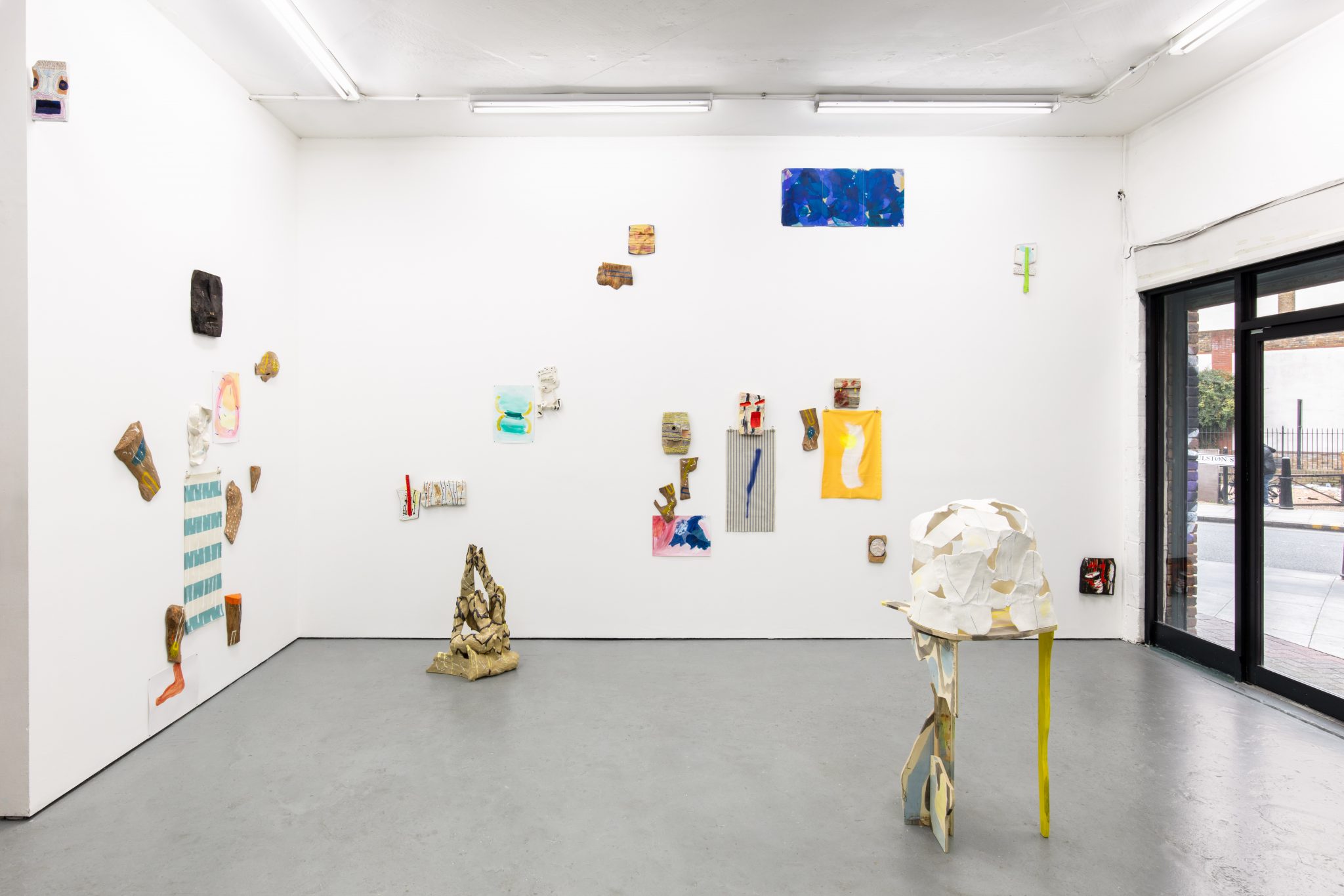From Fukushima to the primal body, Yoi Kawakubo and Nao Matsunaga’s Time Capsule at Yamamoto Keiko Rochaix, London explores ways of making meaning beyond language
Two years after the Fukushima disaster in 2011, Japanese artist Yoi Kawakubo visited the exclusion zone – some 30 square kilometres of land abandoned after the Daiichi Nuclear Power Plant meltdown following a devastating earthquake and tsunami – and attempted to photograph what was left there. His camera, though, remained in its case. Kawakubo buried 8 × 10 silver halide film sheets in the ground at various locations in the site, and the resulting works – five of which are enlarged and on display in Time Capsule – are a portrait of catastrophe in slow motion. In these works, the artist is not present: radiation in the ground activates the contact paper; moisture and fungi curl the edges or corrupt the sheet’s integrity; light emitted over time from the radioactive particles develops in print into abstract washes of Rothko-like colour. In the basement space, three works from the series titled If the radiance of a thousand suns were to burst at once into the skies (2014; a line from the Bhagavad Gita famously quoted by Robert Oppenheimer) are presented untouched or cropped in frames – coral green, fiery yellow, rusty mauve respectively. There’s a sedimentary texture to the colours, as if you could draw a layer from it with a swipe of the finger. Beneath this surface, it’s hard not to keep looking further and further in, like a frozen lake.
The dissonance is dizzying: the ambivalent beauty of these invisible photographs, and the destruction wrought by our gamble on an energy source despite the potential cost. There’s a necessary objectivity about these images as documents of a continuous process of irradiation and mutation, photographs in their most fundamental definition: a chemical process. In Kawakubo’s hands, they’re powerful tools to visually portray the gradual but constant consequences of nuclear meltdown. This is what happens to the land 160,000 residents were displaced from. Other artists have more urgently tackled the ‘triple-disaster’ – like collective Chim Pom’s protest films and illegal trespass on the site, or similarly the artist Kota Takeuchi, filmed pointing a finger at a security camera on 24-hour live feed on Daiichi management firm tepco’s website. If these artists reacted to the explosion – all anger and immediacy – then Kawakubo reacted to the poisoning, the slow, invisible ravage. Like his photographs, the true consequences take time to become clear.

In his ceramic, wood and textile sculptures, Nao Matsunaga is also concerned with abstraction, searching too for ways of capturing or activating the unspeakable. But where Kawakubo is more the initiator than the hands-on creator of his works, Matsunaga is all about the body – his sculptures all begin without planning or organised ideas; slapping clay and carving fluidly, he is entirely uninterested in completion, aesthetic perfection or any particular formal rigour. An assortment of small wood and ceramic sculptures are stuck to the wall, arranged in a loosely human form on one, on another scattered and scaling upward to the ceiling as if rebounded from a blast. Shown next to Kawakubo’s, Matsunaga’s works take on added resonances: there’s something uncanny about the shine of Time Capsule 1 and 2 (both 2024), glazed earthy green and blue ceramic works that here look particularly like boiling and morphing matter; the acrylic paint sprayed onto the fabric of Growth is subtraction (2022) looks like a lit match, but is bent at the stem, as if swaying like some kind of phosphoric dandelion. The exhibition text describes Matsunaga’s interest in primitive history and civilisation, to understand shape and creation before language and visual culture. The best indication we have of such an intention, though, are a series of pointillist white acrylic markings, yellow curving stripes and grooves carved into wood on Large mask 3 (2017) – a troubling visual affinity to Indigenous Australian art that seems to bear no other necessity or relevance than a basic sense of ‘oldness’. It’s a little trite, and it’s disappointing that something so conceptually evocative and aesthetically assured should be paired with something so bumbling – floundering with clay pots and wood blocks, trying to find something that means anything.
Time Capsule at Yamamoto Keiko Rochaix, London, through 10 May
